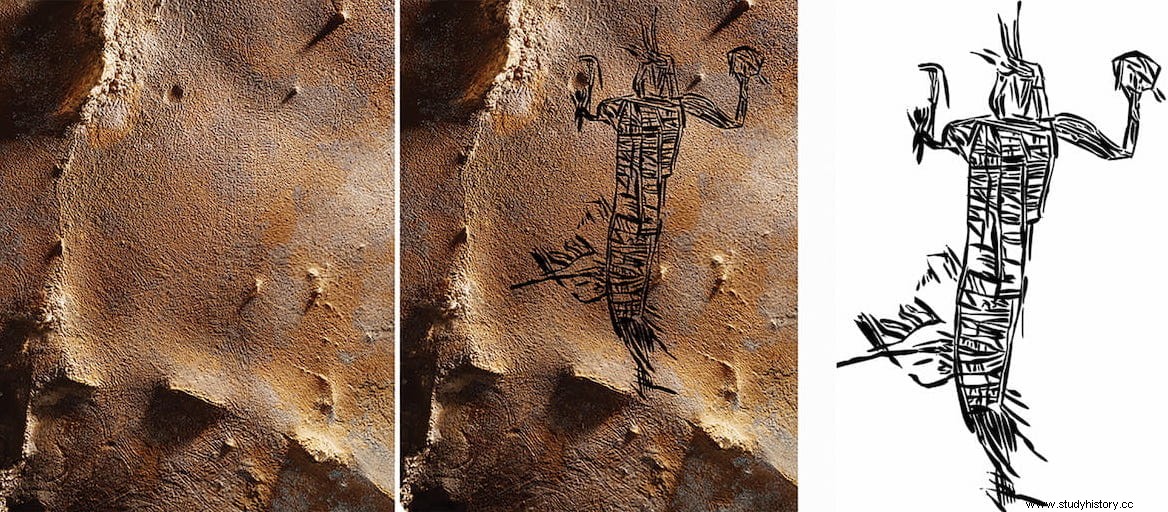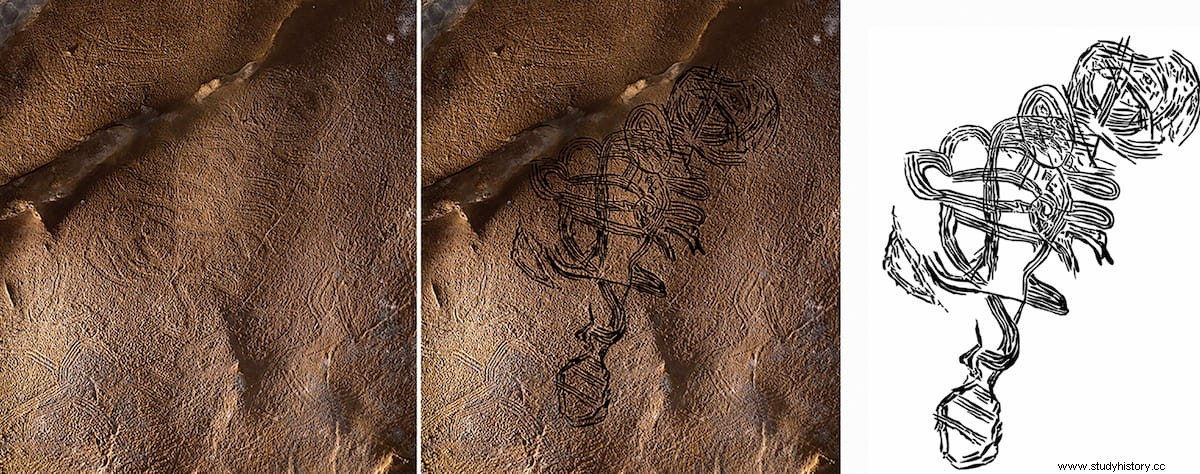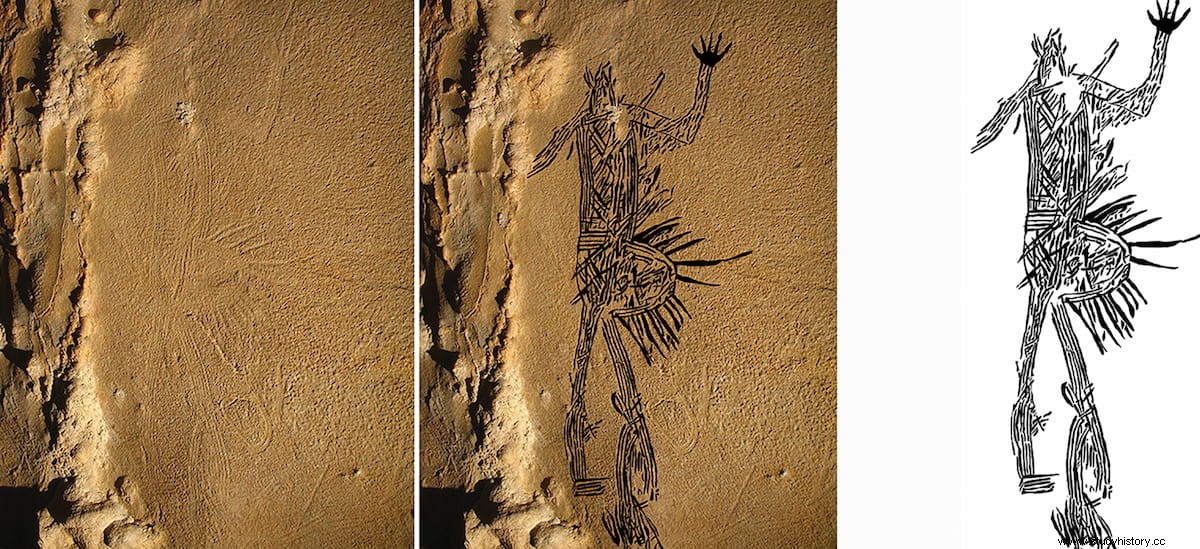Ancient Art Archive and Dr. Jan Simek of the University of Tennessee used 3D digital modeling techniques to uncover previously unknown large-scale indigenous rock art on a cave ceiling in the southeastern United States. Ancient Art Archive was able to perform the large-scale 3D modeling that enabled this discovery thanks to a grant from the Lyndhurst Foundation.
Dr. Simek describes the significance of these hitherto unknown rock carvings:We haven't seen anything like it before, we don't know the identity of these ancient anthropomorphs of rock art. They are not recognizable characters from ethnographically recorded Southeastern Native American stories, nor from archaeologically known iconographic materials .
The mapping of the ceiling of that cave was one of the first projects of Ancient Art Archive , a proof of concept designed to test whether we could use a 3D mapping technique called photogrammetry to digitally 'see' the rock art—in this case, faint clay glyphs—on a southern United States cave ceiling Joined. We knew the glyphs existed, but they were so faint that it was impossible to make out the full images.

At the Ancient Art Archive we use photogrammetry to create VR experiences in caves and rock art sites around the world, but photogrammetry techniques had never been tried as a discovery tool prior to our work in this cave.
In this project we take the capabilities of photogrammetry to the limit, and a little beyond. We had to build a completely new computer to finish the project. The heat created by the processing power required to compile thousands of images melted the motherboard of our first machine.

The southeastern United States has more than ten thousand caves. We have long known that indigenous cave explorers roamed miles underground. But the area isn't well known for rock art, though the indigenous people of the southeastern United States created plenty of it.
However, the area is a poorly preserved environment:abundant humidity and rain quickly degrade most of the rock art. The rock art of the forest culture requires special circumstances to survive, and a very observant person to notice it.
Photographer and cave explorer Alan Cressler was the first modern person to spot artwork in the cave. He and Dr. Simek of the University of Tennessee described those clay glyphs in a 1999 paper. When Cressler observed other clay glyphs on the ceiling, more than 15 years after that first publication, the Ancient Art Archive put started their project in the cave to see if 3D modeling could reveal other clay glyphs.

The effort was spectacularly successful. Photogrammetry revealed thousands of additional glyphs and images, most outside the canon of Native American iconography previously detected in the southeastern United States. Furthermore, the images are much larger than any previously known in the region. In size, they rival some of the largest pictographs and petroglyphs in the American West. They are also the largest images of rock art discovered so far in America. Dr. Simek details these discoveries in an article published in May 2022 in Antiquity.
The use of 3D models to reconstruct the cave allows not only to discover hitherto unknown works of art, but to see the entirety of the ceiling carvings in context as a single composition. And context is critical if we hope to tease out the meaning of the image. The images are believed to be from the North American mound-building culture (beginning around 2500 BC).
To build the 3D model, it was necessary to join more than 16,000 superimposed photographs. Stephen Alvarez spent months crawling on the cave floor to take all those photos, and then months more to build a detailed model of the cave. Stephen chose photogrammetry over another 3D modeling technique called Lidar due to the harsh environment of the cave.
Stephen created an accurate map of the cave ceiling. The computer program allowed him to project a virtual "light" onto the ceiling from any angle, revealing the details of hitherto obscure works of art.
